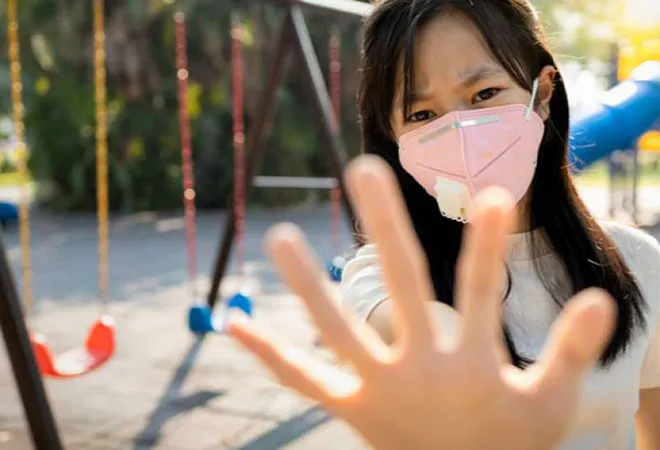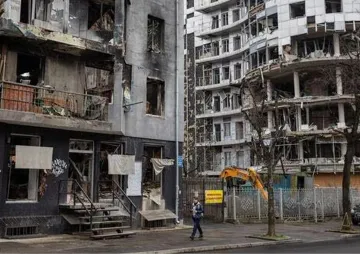
With the spread of
Covid 19 pandemic in India, it is time to look into the state of public healthcare facilities in India’s north east region that comprises of the eight border states including- Assam, Meghalaya, Mizoram, Manipur, Tripura, Nagaland, Arunachal Pradesh and Sikkim. Public healthcare facilities play a critical role in tackling any health disaster, however, people in the north east region are concerned about the the capabilities of the public health infrastructure. Popular perception in the region is that the existing facilities are insufficient and lack in quality. People’s scepticism intensified following the rise in the cases of Covid 19 in the country, and this region is not isolated from its risk. Given the state of public healthcare facilities, people fear the impact of Covid 19 could be catastrophic.
The region first experienced the the virus after
an American tourist positive for Covid 19 visited Assam. Nearly 400 people, who came in contact with the tourist, were quarantined and tests were conducted as a preventive measures. Fortunately, all the test results came negative. Nevertheless, the incident highlighted the vulnerabilities of the region and the state governments were proactive in taking precautionary measure. Given the region sharing boundary with other countries including- China, Myanmar, Bangladesh, Bhutan and Nepal, the international borders were sealed to prevent a trans-national spread of virus. Notably, China is one of the worst affected countries globally. Again, strict screening is carried out at the airports, particularly for people coming from outside the region. Furthermore,
Inner Line Permit(ILP) eligible states of Manipur, Mizoram, Nagaland and Arunachal Pradesh have stopped issuing entry permits to people from outside the region. The initial response to these measures has been successful in limiting the spread of the disease to a large extent.
In the region, special medical facilities have been arranged for treatment of the virus-infected patients. Some of the measures that have been initiated include opening of special isolation wards and testing facilities in designated hospitals. The prominent hospitals with testing facilities include- Guwahati Medical College in Guwahati, Assam, Regional Medical Research Center in Dibrugarh, Assam; NEIGRI of Health and Medical Sciences (NEIGRIMS) in Shillong, Meghalaya; JN Institute of Medical Sciences Hospital in Imphal, Manipur and Government Medical College in Agartala, Tripura. People of the region, however, feel the measures will not be enough in handling a crisis if the spread escalates. Their fear arises largely due to the state of public health, especially, the critical infrastructure available.
Barring few of the premier medical institutes such as Guwahati Medical College, NEIGRIMS, and the Assam Medical College in Dibrugarh, region’s oldest medical college (started as a medical school in 1870), the public health infrastructure of the region is one of the most underdeveloped in the country. India maintains a three-tier system (primary, tertiary and secondary) for delivering healthcare to an individual. To support the healthcare, sub-centres fall first in this tire and are thus the frontline for healthcare to most people. A sub-centre is managed by an Auxiliary Nurse Midwife (ANM) and a male health worker. Primary Health Center (PHC) comes second in the tier and is hub for 6 sub-centres and supposed to have and 4-6 beds for addressing immediate and basic healthcare necessities. Third in the tier is Community Health Centers and likely to have at least 4 doctors including 1 Surgeon, 1 Physician, 1 Gynaecologist and 1Pediatrician and at least 21 paramedics. For any medical needs, people have to first rely on these facilities before they are referred to tertiary care institutions which are generally located in big cities like Guwahati, Shilong or Dibrugarh.
There is a shortfall of these basic healthcare facilities in most of the states in the region. In Assam, there is 50 percent shortage of Community Health Centers. Similarly, Tripura has 17 percent shortage of PHCs.
To add to the above, there is also a shortage of skilled manpower including superiors, doctors, specialists, female health workers. north east India has a supply gap of 36,009 registered doctors. Also, there is 66 percent gap in the supply of trained nurses. There is 1 nurse per 1,483 people which is higher than the national average of 890 and it does not meet the WHO prescribed norms of 2 nurses per 1000 people. Additionally, quality diagnostics has been a costant concern as many district towns lack proper diagnostic facilities. Further, facilities available in the tertiary care institutions are not always satisfactory. Many of the institutes here do not have necessary equipment for critical care like ventilators and specialist doctors. For example, the Silchar Medical College, a major referral institute in southern Assam which also caters to the needs of parts of Tripura, Mizoram and Manipur bordering Assam does not have cardiologists and neurosurgeons.
The region’s mountainous topography often adds to make access to health care facilities difficult. Commuting in the region is often time consuming and cumbersome, making travelling to Guwahati or Shillong for higher medical treatment a challenge. With the lockdown in place now, many fear travelling to bigger towns to access critical medical treatment will now be even more difficult.
Recently, larger involvement of the private sector in the healthcare of the region has been encouraged. Some of the private sector hospitals have been providing credible services, however, problems and bottlenceks have persisted. The private sector is primarily based in the big cities, so they cannot fulfil the needs of the common people always. Again, the private sector in the region also suffers from quality support man-power, infrastructure and a trust deficit. People of the region often travels to other parts of the region, primarily southern Indian states for critical health issues due to the overall dismal state of health care facilities in the north east.
Hopefully, the state governments will draw lessons from the Covid 19 disaster and work on improving healthcare facilities nationally. Greater use of the technology in the healthcare sector, especially, setting up telemedicine centers could be one of the first pragmatic moves towards a new beginning.
The views expressed above belong to the author(s). ORF research and analyses now available on Telegram! Click here to access our curated content — blogs, longforms and interviews.



 With the spread of
With the spread of  PREV
PREV


